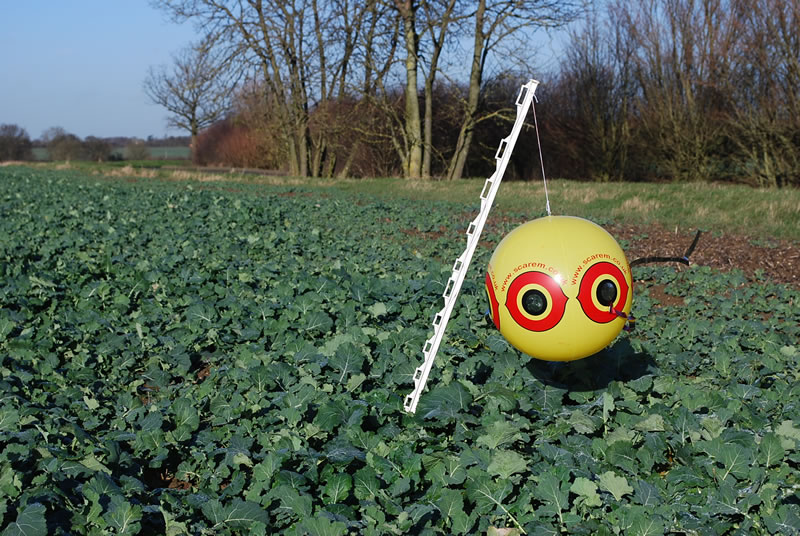 Ever since the advent of agriculture there have been problems with birds partaking of the harvest. There are all kinds of methods today to try to deter crop predators, the most well known being, of course, the scarecrow, which has existed for at least 3000 years. Approximately 2,500 years ago, Greek farmers carved scarecrows in the image of Priapus, a minor fertility god and protector of crops (as well as male genitalia.) Priapus was said to be such an ugly child child that when he played in the vineyards he scared away the birds. This induced farmers to make the wooden statues, painting them purple, with a club in one hand in order to make the statues look more menacing.
Ever since the advent of agriculture there have been problems with birds partaking of the harvest. There are all kinds of methods today to try to deter crop predators, the most well known being, of course, the scarecrow, which has existed for at least 3000 years. Approximately 2,500 years ago, Greek farmers carved scarecrows in the image of Priapus, a minor fertility god and protector of crops (as well as male genitalia.) Priapus was said to be such an ugly child child that when he played in the vineyards he scared away the birds. This induced farmers to make the wooden statues, painting them purple, with a club in one hand in order to make the statues look more menacing.
In Medieval England birds were a lot more abundant than they are now and crop loss to hungry birds much more devastating, so farmers used young boys and sometimes girls nine or older as bird scarers. They patrolled wheat fields carrying bags of stones and if crows or starlings landed in the fields they would chase them off by making noise, waving their arms, and throwing the stones. Sometimes, instead of stones, the children carried clappers of various designs that made noise. Bird scarers continued to patrol British fields until the 1800s when factories and mines opened up and offered children better jobs.The black plague of the 14th century killed so many people that landowners could not find enough bird scarers to protect their crops, so they stuffed sacks with straw, carved faces in gourds or pumpkins, and made scarecrows that stood against poles.
In America, Native Americans used scarecrows or adult men as bird scarers. Some of these men sat on raised platforms and howled or shouted if predators can near the corn. In Georgia, Creek Indian families moved into huts in their corn fields during the growing season. In what is now New York, the Seneca Indians soaked corn seeds in a poisons her mixture that apparently disoriented the birds. In the American Southwest, Zuni Indians used fiber made from the yucca plant stretched between poles placed all over the cornfield; rags, skins of coyotes, and the shoulder blades of other animals were hung from the lines to scare birds.
When the colonists settled in North America in the 1600s, pilgrim families took turns as bird scarers. They not only had to scare birds, but wolves as well as the wolves tried to dig up the fish the pilgrims buried to fertilize their crops. By the 1700s, with increasing needs for food, bird scarers were not efficient enough to prevent serious crop loss, so bounties were established for dead crows. Unfortunately, like many well-intentioned but not well-thought out plans, so many crows were killed that by the 1800s corn borers and other insects which were once eaten by crows were now destroying more corn than the crows ever did. Finally the bounties were stopped.
Stay tuned to find out more about scarecrows and if the plastic owl you bought to frighten birds actually workd.